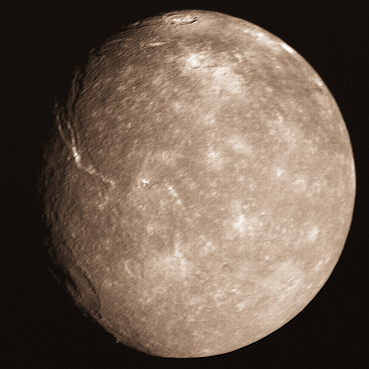Credit & Copyright: NASA, Voyager 2, Calvin J. Hamilton
Explanation:
Titania's tortured terrain is a mix of valleys and craters. NASA's
interplanetary robot spacecraft Voyager 2 passed this moon of
Uranus in
1986 and took the above photograph. The photograph was then transmitted
back to earth by radio. The valleys of
Titania
resemble those on
Ariel indicate that Titania underwent some unknown
tumultuous resurfacing event in its distant past. Although
Titania is
Uranus' largest moon, it is still much smaller than
Triton - the largest
moon of Uranus' sister planet
Neptune. Titania is essentially a large dirty
iceball that orbits Uranus - it is composed of about half water-ice and
half rock. Titania was discovered by William Hershel in 1787.
Information:
The
Scale of the Universe Debate in April 1996
1999 2000 2001 2002 2003 2004 2005 2006 2007 2008 2009 2010 2011 2012 2013 2014 2015 2016 2017 2018 2019 2020 2021 2022 2023 2024 2025 |
Январь Февраль Март Апрель Май Июнь Июль Август Сентябрь Октябрь Ноябрь Декабрь |
NASA Web Site Statements, Warnings, and Disclaimers
NASA Official: Jay Norris. Specific rights apply.
A service of: LHEA at NASA / GSFC
& Michigan Tech. U.
|
Публикации с ключевыми словами:
Uranus - titania - Титания - Уран - спутники Урана
Публикации со словами: Uranus - titania - Титания - Уран - спутники Урана | |
См. также:
Все публикации на ту же тему >> | |
